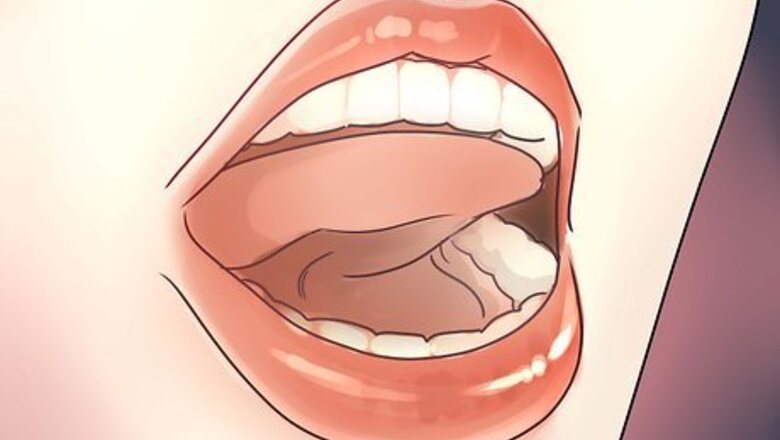
views
Positioning Your Mouth and Tongue
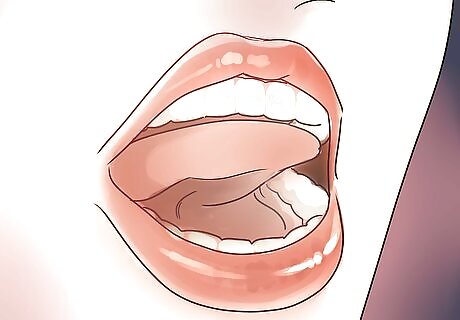
Widen your tongue so that it rests against the upper molars on either side of your mouth. This creates an air passageway along the roof of your mouth. Be sure not to allow any air to escape through the sides. By forcing air through this channel, you will able to produce a sharp whistle instead of breathy noises. Position your tongue closer to the roof of your mouth by drawing the tip toward your bottom front teeth. Place the sides of your tongue alongside your molars. This will fatten your tongue, narrowing the air channel along your palette while simultaneously creating a wider gap at the front of your mouth through which to push the air. The positioning here is crucial. To produce a whistle, you must force air around a sharp bend, which in this case is created by your front teeth and tongue. Forcing the air higher along your palette makes this bend even sharper.
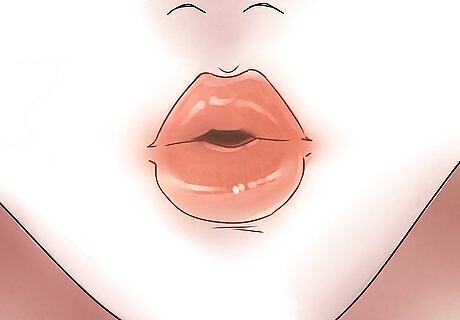
Purse your lips firmly, pressing them against your teeth. This reinforces the sharp bend in the air passageway produced by your front teeth. Resist the urge to jut your lips out, which will produce a breathy sound. Pout your lips outwards like you are kissing and form a small hole, smaller than the size of the circumference of a pencil. Your lips should be kind of hard and tense with lots of wrinkles – especially your bottom lip. It should protrude out a little more than your top lip. Don't let your tongue touch the top or bottom of your mouth. Instead, let it hover in your mouth around the back of your front teeth.
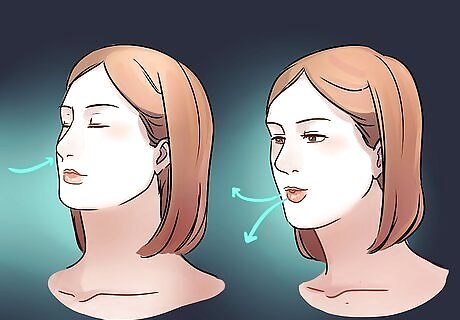
Practice breathing without puffing your cheeks out. To whistle, the air needs to stay along this path – it cannot rest in the sides of your cheeks. If anything, they should be slightly caved in on the sides as the result of your pursed lips. Imagine sucking through a straw – that's the look you should have at all times. When you inhale, it should be difficult to get your breath – that's how small the hole formed by your lips should be. You will then be able to control your breath through this hole, making it last much longer than you would if you were speaking or singing.
Forming the Sound

Blow air out of your mouth slowly, experimenting with your tongue positioning. Though you want the air passage along your palette to be narrow, too little space produces just as breathy a sound as too much. Similarly, you must work to find the ideal distance between the front of your tongue and your teeth. Once you strike a balance between these two, you will be able to move your tongue back and forth in your mouth to produce different pitches. It's all with the tongue and the cheeks. When you "blow" air through your lips, the main problem is either you're blowing too much air, or the pucker is not quite right.

Adjust your volume and pitch. A larger pucker (larger 'o' shape) and more air will increase volume; a smaller 'o' and less air will make your whistle quieter. It's important to pucker, but not too much; just enough to make a small 'o' with your lips. Try blowing; and if there is a sound, move your tongue around to how and what position gives you the best tone and output. The pitch comes from the amount of volume (physical volume) in the cavity you create between the opening in your lips and the back of your throat. The smaller this is, the higher the pitch will be and thus the larger this cavity is, the lower the pitch will be. In other words, the closer your tongue is to your mouth, the higher the pitch you produce.
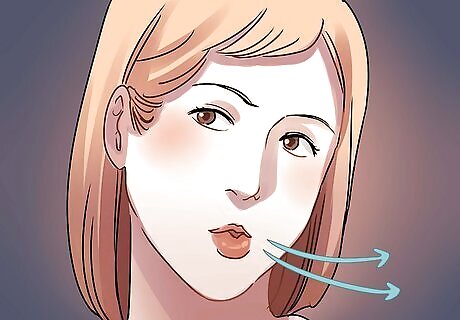
Experiment with pitch modulation and positioning. There are many ways of modulating the pitch of your whistle with your tongue: you can slide it back and forth like one of those cane whistles (actually very much like one of those) or you can bend it up and down creating a smaller or larger space. As you get better, you can use your throat as well to expand this area and reach even lower notes. The vibrato effect comes from moving your tongue back and forth very slightly to waver from two notes. As said before, it's all with the tongue and cheeks and practice. If you can whistle, whistle all the time.
Troubleshooting How to Whistle
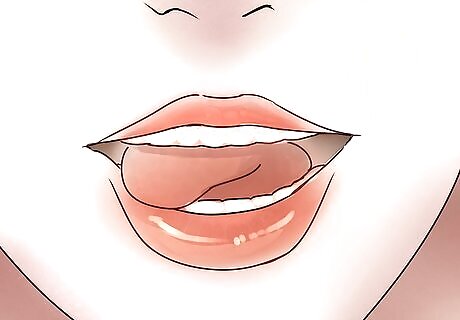
Experiment with wetting your lips. Some believe that it's a myth to say that wetting your lips is necessary to whistle while others swear by it. If you're having a hard time producing a whistle, try moistening your lips. Think of it as wetting your finger before you produce the sound around the rim of a glass. By wetting, we don't mean drenched. Just moisten the inside of your lips with your tongue lightly, and get back to practicing. If there's a difference, this method may work for you.
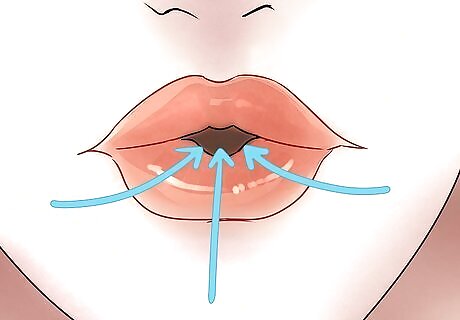
Try sucking in instead of blowing out. Some people have better luck sucking air in than blowing it out. However, for most people, this is much, much harder. That being said, the logistics of placing your tongue and mouth are the same; give it a go if the standard method is becoming frustrating.
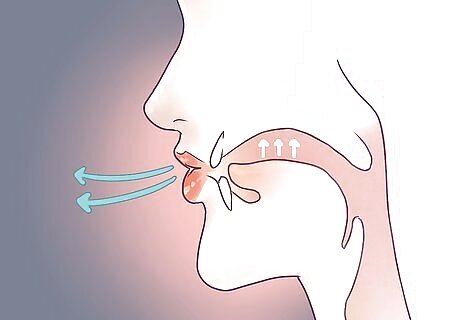
Adjust the height of your tongue. With the front of your tongue on the back of your front teeth, move it up or down just a smidge. Does it change the tone? Does one tone seem to be closer to whistling than another? Keep adjusting the very tip of your tongue until you find that one tone you can produce, no problem. Once you find the right spot for the tip of your tongue, start experimenting with moving the middle of your tongue. This changes to air flow and will thus change your pitch. Once you find other pitches, it's just a matter of knowing which position correlates to which note.

Keep trying. Whistling takes time to master. It might be a while before you find the right shape to make with your mouth or how much air you should blow out. Concentrate on making one flat tone before you go worrying about pitch or volume, too. Ask a few friends how they do it; you may be surprised that they all have slightly different techniques. No one's mouth is the exact same shape and size, so it makes sense that we all have to whistle slightly different ways.
















Comments
0 comment